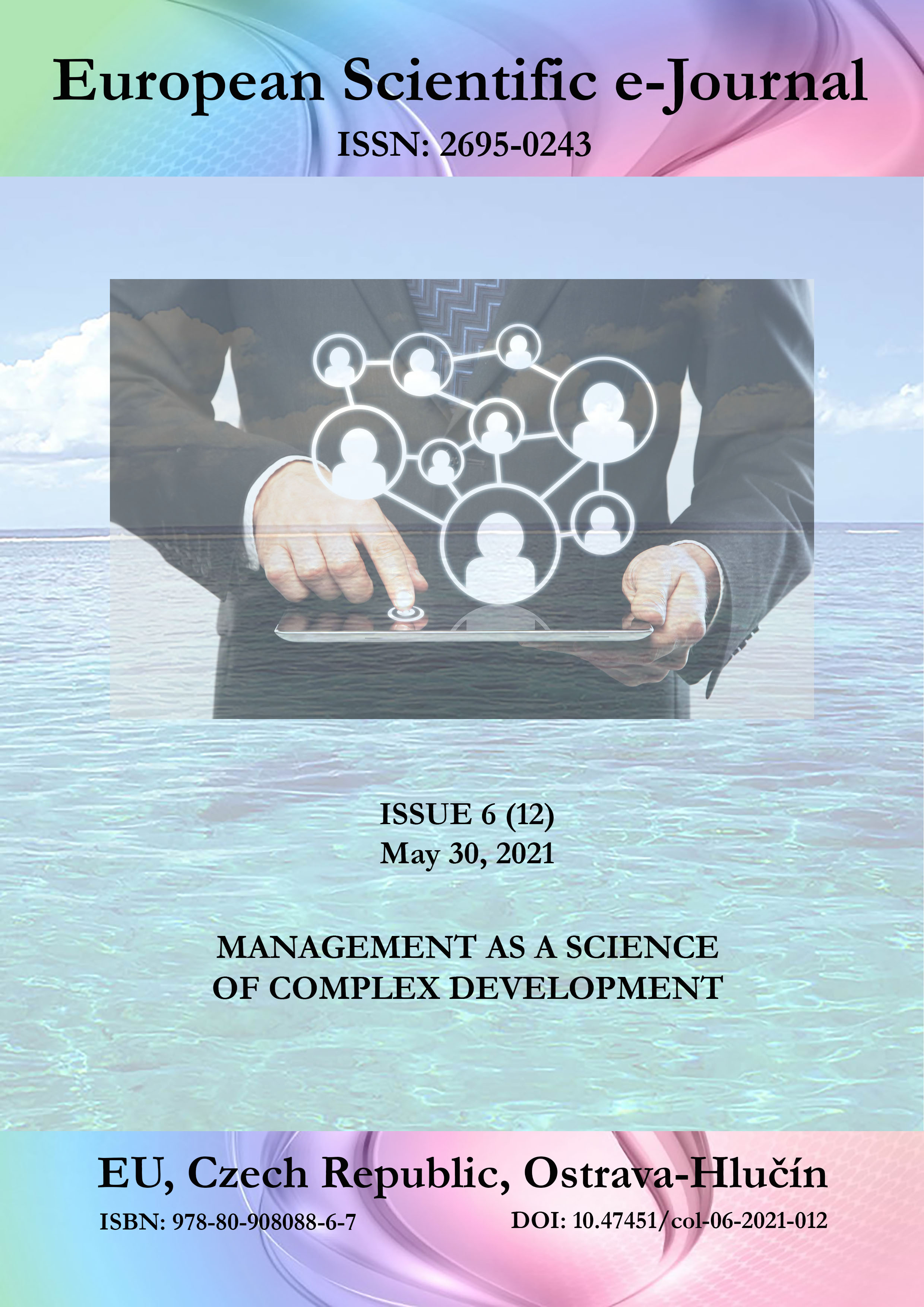Challenges in Determining the Contribution of the Operating System to the Formation of Competitive Advantages of the Enterprise
DOI:
https://doi.org/10.47451/man2021-04-001Keywords:
resource-based theory, dynamic capabilities, competitive advantages, operations managementAbstract
The purpose of this article is to outline the challenges in determining the contribution of the operating system to the formation of competitive advantages of the enterprise based on the application of resource-based theory. Due to the growing number of publications linking the resources and dynamic capabilities of operations management and sustainable competitive advantages, this article reviews and systematizes the concepts used in the literature to determine the contribution of the operating system to the formation of competitive advantages of the company. The main characteristics of the dynamic capabilities are considered and on this basis the main challenges in the study of factors and causal relationships at the level of the operating system of the enterprise are presented, with an emphasis on the way of choosing independent and result variables, and the determination of causal relationships. Future research in the field of operations management that addresses the outlined challenges could contribute to a more comprehensive and complete study of dynamic capabilities in operations function. The research would be useful both for researchers in the field of operations management and for practitioners looking for sources and reasons for increasing the competitiveness of the companies in which they work.
Downloads
References
Михайлова, М. (2020). Дискусионни аспекти в моделите за операционализиране на динамичните способности. Диалог, 1, 16–32. Свищов: Акад. изд. Ценов.
Михайлова, М. (2013). Морфология на икономическата категория динамични способности. Известия Сп. Икон. унив., 1, 99–111. Варна: Наука и икономика.
Amit, R. & Schoemaker, P. J. H. (1993). Strategic assets and organizational rent. Strategic Management Journal, 14, 33–46. (на англ.)
Armstrong, C. E. & Shimizu, K. (2007). A review of approaches to empirical research on the resource-based view of the firm. J. Manag, 33(6), 959–986. (на англ.)
Barney, J. B. (1991). Firm resources and sustained competitive advantage. J. Manag, 17, 99–120. (на англ.)
Barney, J., Ray, G., & Muhanna, W. (2004). Capabilities, Business Processes, and Competitive Advantage: Choosing the Dependent Variable in Empirical Tests of the Resource-Based View. Strategic Management Journal, 25(1), 23–37. (на англ.)
Conner, K. R., & Prahalad, C. K. (1996). A resource-based theory of the firm: knowledge versus opportunism. Organization Science, 7(5), 477–501. (на англ.)
Collis, D. J., & Montgomery, C. A. (1998). Creating corporate advantage. Harvard Business Review, 76(3), 70–83. (на англ.)
Cyert, R. M., & March, J. G. (1963). A Behavioral Theory of the Firm. Prentice-Hall: Englewood Cliffs, NJ. (на англ.)
Eisenhardt, K. M., & Martin, J. A. (2000). Dynamic Capabilities: What Are They? Strategic Management Journal, 21(10/11), 1105–1121. (на англ.)
Grant, R. M. (1996). Toward a knowledge-based theory of the firm. Strategic Management Journal, Summer Special Issue, 17, 109–122. (на англ.)
Größler, A., & Grübner, A. (2006). An empirical model of the relationships between manufacturing capabilities. International Journal of Operations & Production Management, 26, 458–485. (на англ.)
Henderson, R., & Cockburn, I. (1994). Measuring competence? Exploring firm effects in pharmaceutical research. Strategic Management Journal, 15, 63–84. (на англ.)
Hitt, M. A., Xu, K., & Carnes, C. M. (2016). Resource based theory in operations management research. J. Op. Manag, 41, 77–94. (на англ.)
Ketokivi, M., & Schroeder, R. (2004). Manufacturing practices, strategic fit and performance – A routine-based view. International Journal of Operations & Production Management, 24, 171–191. (на англ.)
Milgrom, P, Qian, Y., & Roberts, J. (1991). Complementarities,momentum, and the evolution of modern manufacturing. American Economic Review, 81(2), 84–88. (на англ.)
Nelson, R. R. (1991). Why do firms differ, and how does it matter? Strategic Management Journal, 12, 61–74. (на англ.)
Nelson, R., & Winter, S. (1982). An Evolutionary Theory of Economic Change. Belknap Press: Cambridge, MA. (на англ.)
Peng, D. X., Schroeder, R. G., & Shah, R. (2008). Linking routines to operations capabilities: a new perspective. J. Oper. Manag, 26, 730–748. (на англ.)
Peteraf, M. A. (1993). The cornerstones of competitive advantage: A resource-based view. Strategic Management Journal, 14, 179–191. (на англ.)
Porter, M. E. (1980). Competitive strategy. New York: Free Press. (на англ.)
Porter, M. E. (1996). What is strategy? Harvard Business Review, 74(6), 61–78. (на англ.)
Priem, R. L., & Butler, J. E. (2001). Is the resource-based ‘view’ a useful perspective for strategic management research? Academy of Management Review, 26(1), 22–40. (на англ.)
Teece, D. J., Pisano, G., & Shuen, A. (1997). Dynamic capabilities and strategic management. Strategic Management Journal, 18, 509–533. (на англ.)
Williamson, O. E. (1999). Strategy research: governance and competence perspectives. Strategic Management Journal, 20(12), 1087–1108. (на англ.)
Published
Issue
Section
License
Copyright (c) 2025 European Scientific e-Journal

This work is licensed under a Creative Commons Attribution 4.0 International License.
The European Scientific e-Journal (ESEJ) is an open access journal. Articles are available free of charge as PDF files on the website of the European Institute for Innovation Development. PDF files can be previewed with Acrobat Reader from www.adobe.com.
All articles of the “Tuculart Student Scientific” are published under a Creative Commons Attribution 4.0 Generic (CC BY 4.0) International license.
According to the Creative Commons Attribution 4.0 Generic (CC BY 4.0) International license, the users are free to Share — copy and redistribute the material in any medium or format for any purpose, even commercially (the licensor cannot revoke these freedoms as long as you follow the license terms).
Under the following terms:
- Attribution — You must give appropriate credit, provide a link to the license, and indicate if changes were made. You may do so in any reasonable manner, but not in any way that suggests the licensor endorses you or your use.
- No additional restrictions — You may not apply legal terms or technological measures that legally restrict others from doing anything the license permits.


